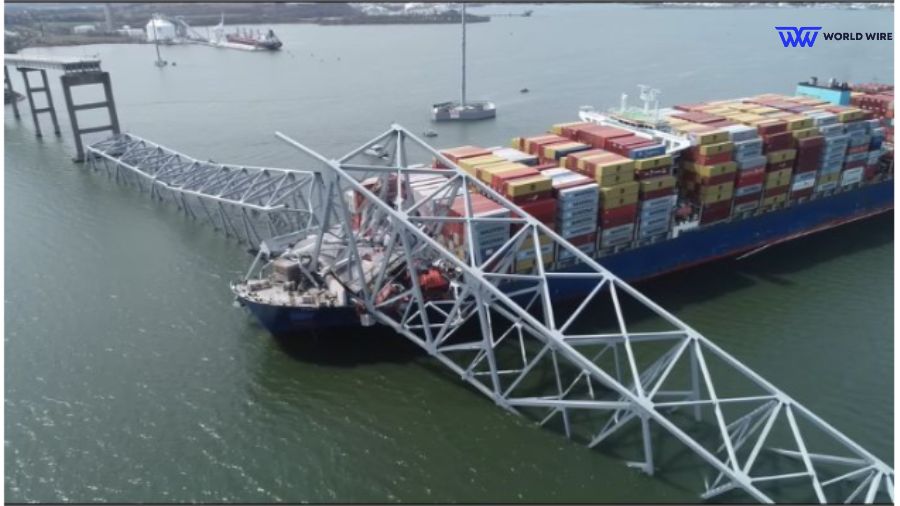The recent collapse of the Francis Scott Key Bridge has highlighted the challenges of maintaining critical infrastructure in Baltimore.
This incident has also shed light on the complexities of responding to emergencies in vital transportation networks.
On March 26, the cargo ship Dali lost power on its way to Sri Lanka and collided with the bridge.
This unfortunate event resulted in the loss of six road workers and caused significant disruptions to the Port of Baltimore, a key hub for international trade.
In the wake of this disaster, the U.S. Army Corps of Engineers has taken swift action to mitigate the impact on commerce and the local community.
They announced plans to open a new channel by the end of April, aiming to alleviate some of the congestion caused by the bridge’s collapse.
The Corps “expects to open a new channel to the Port of Baltimore by the end of April,” underscoring their commitment to restoring normal operations as quickly as possible.
The temporary channel, expected to be “280 feet wide and 35 feet deep,” will initially accommodate roll-on/roll-off vessels, crucial for transporting automobiles and farm equipment.
This is a significant step, given the port’s status as the leading U.S. hub for these types of cargo. According to the Corps’ ambitious timeline, the full restoration of the port’s access, with a “700-foot-wide by 50-foot-deep navigation channel,” is anticipated by the end of May.

The incident has disrupted commercial activities and highlighted the resilience and urgency of the response from multiple federal and state agencies. President Joe Biden‘s visit and the initial $60 million in emergency funding demonstrate the federal government’s support in the recovery efforts.
Lt Gen Scott Spellmon, commanding general of the Corps, emphasized, “A fully opened federal channel remains our primary goal,” with safety being the paramount concern. He also noted, “The timelines are ambitious and may still be impacted by adverse weather or changes in the complexity of the wreckage.”
The challenges ahead are not insignificant. The salvage operation involves not only removing the Dali and the bridge debris but also recovering the remains of the workers lost in the collapse.
The murky waters of the Patapsco River, where visibility is limited to a mere one to two feet, add another layer of complexity to the recovery efforts. Gov Wes Moore highlighted the difficult conditions faced by divers, who rely on a buddy system for navigation and safety.
The bridge collapse has far-reaching implications beyond the immediate logistical challenges. Isabella Casillas Guzman, head of the U.S. Small Business Administration, noted the “full range of impact” on businesses, particularly those in transportation and supply chain logistics.
The Maryland Senate’s move to use the state’s rainy day fund to support unemployed port employees reflects the widespread economic ripple effects of the incident.
The situation in Baltimore is a stark reminder of the interconnectivity of our infrastructure and the cascading effects that a single failure can have on national and global supply chains.
The efforts to restore navigation to the Port of Baltimore are about more than rebuilding a channel; they’re about reinforcing the resilience of our transportation networks and the communities that depend on them.
As the recovery progresses, the lessons learned from this incident will undoubtedly inform future infrastructure planning and emergency response strategies. The goal is to rebuild and emerge stronger, with enhanced capabilities to prevent and respond to such challenges.
The path to recovery is ambitious, but with the collaborative efforts of local, state, and federal agencies, there is a clear roadmap to restoring the vital flow of commerce and ensuring the safety and well-being of those who rely on the Port of Baltimore.







Add Comment